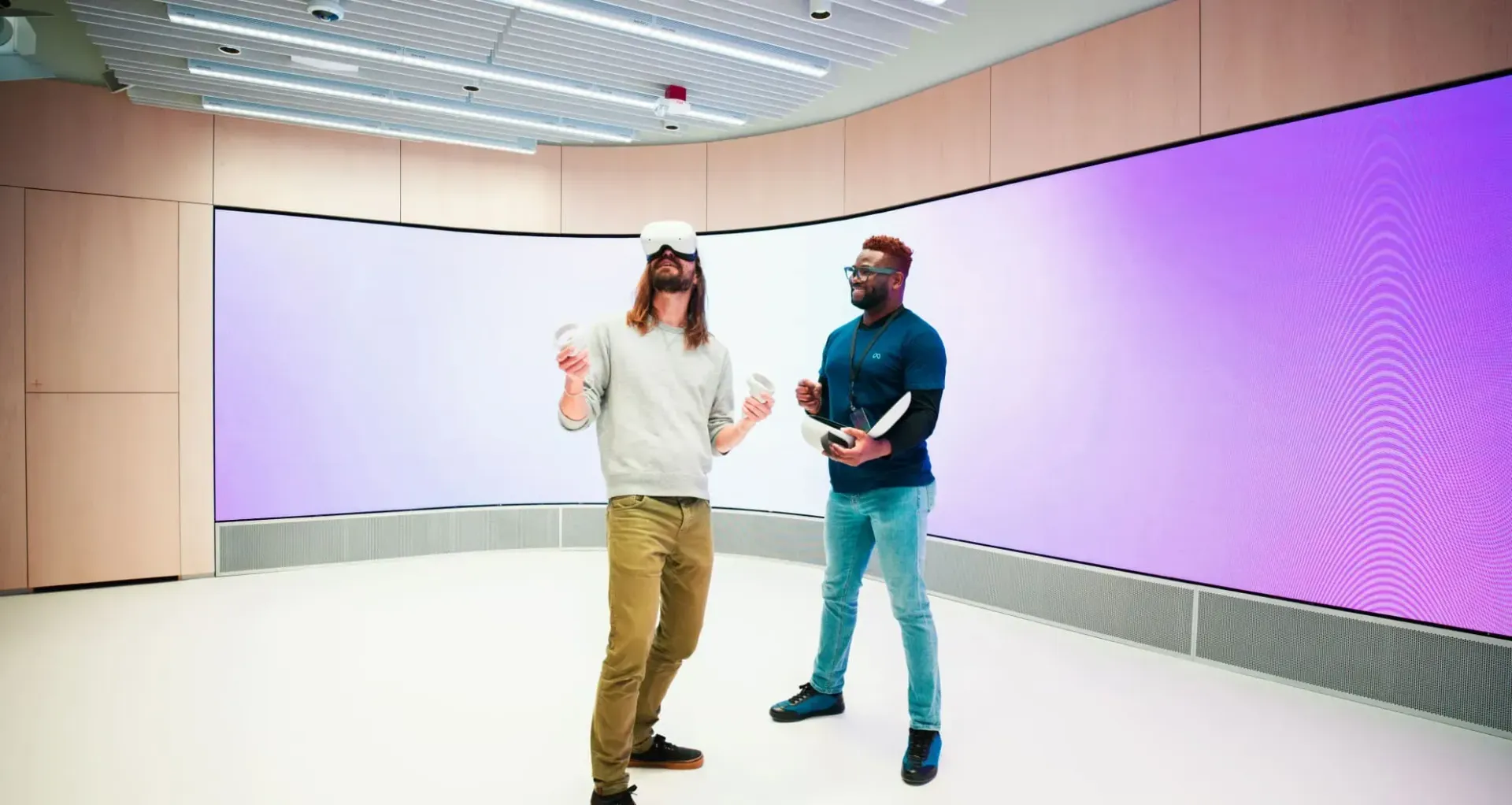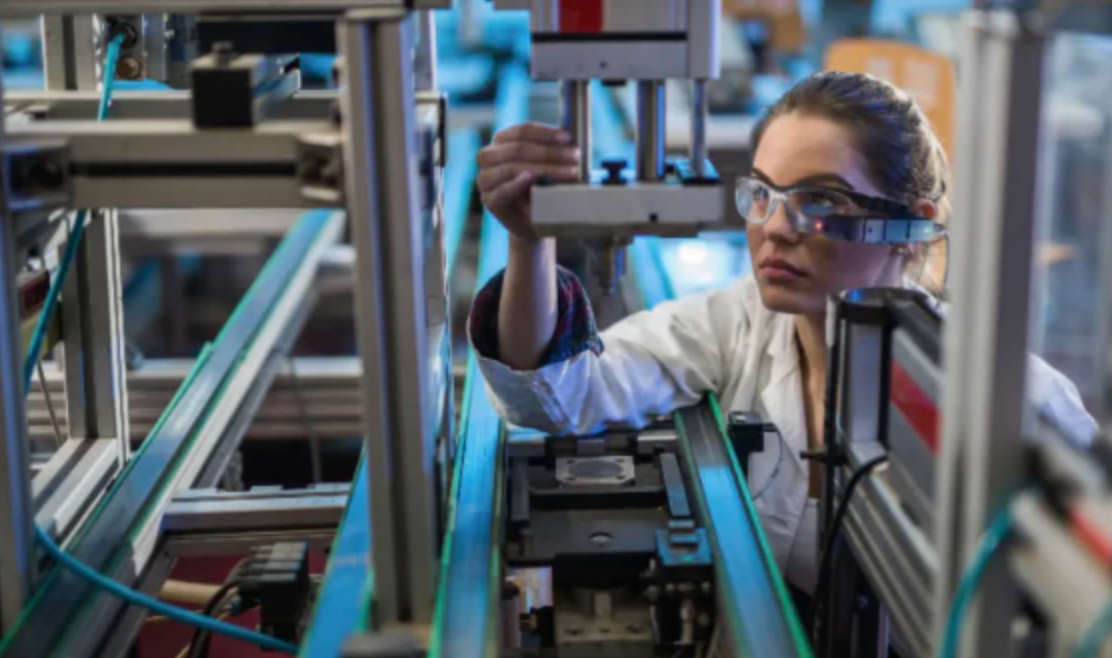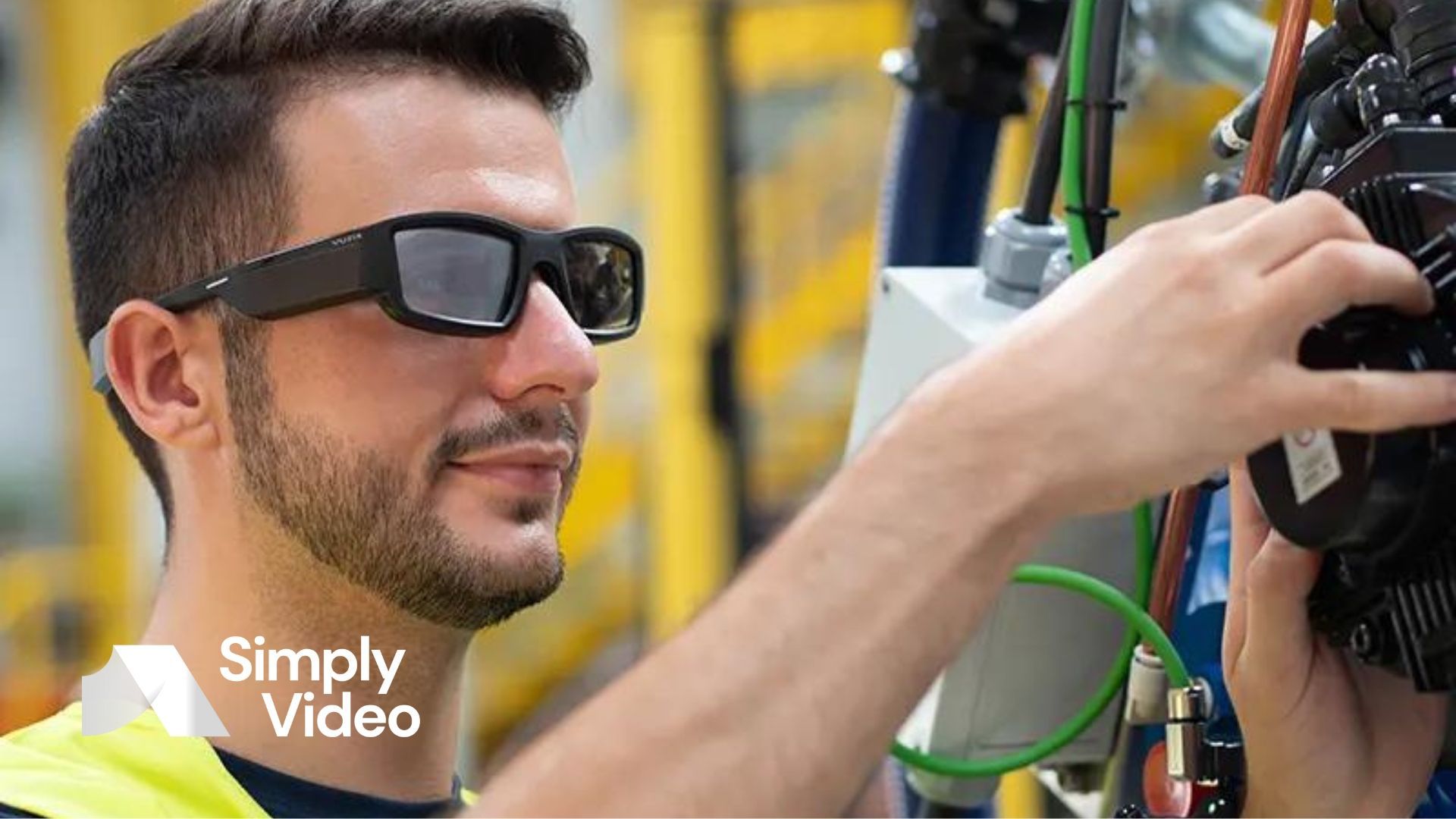In-call annotation: a lifesaver for remote assistance
Smartphones just aren't designed for field work. Discover how SimplyVideo's in-call annotation feature can bring remote assistance into the 21st century.

One of the most compelling use cases for extended reality (XR) technology is remote assistance. In other words, giving field workers the help they need to finish a job while they're doing the job.
Traditionally, workers would call for assistance over the phone. And you don't need an overactive imagination to guess how badly this can play out.
"Hi, Jane. I'm working on the QB-1450. The second revision. I think I've narrowed the problem down to the influx capacitor, but I want to double-check that the dip switches are set to maintenance mode. Can you help?"
"OK. Can you tell me the positions of the second row of dip switches? The red ones, not the white ones."
"Sure, they're up, up, down, up, down – then there's one that's kind of stuck in the middle – then up, up, down, down…"
You get the picture. Providing remote assistance over the phone is time-consuming, error-prone and – frankly – frustrating for everyone involved.
And these little annoyances can turn into serious, pervasive problems. If communication breaks down – as it often does – then the only option is to bring the remote expert on-site. They'll need to investigate the problem first-hand. And once they've identified the issue, they might need to order parts.
This all leads to downtime, which leads to client dissatisfaction and plummeting profits. And that's before you factor in the cost of travel and accommodation. And the environmental consequences. And the fact that the expert is spending time fixing your specific issue rather than sharing their expertise.
How XR can help
There's a category of XR devices that are particularly suited to remote assistance. These devices fall under the umbrella of assisted reality (aR).
aR devices are basically head-mounted, portable computers. They have forward-facing cameras to stream "see-what-I-see" video and use unobtrusive heads-up displays so users can safely focus their attention on the job. Most also support voice commands, so users can work hands-free.
The hardware comes in different shapes and sizes. Some are headsets, like the
RealWear HMT-1. Others, such as the
Vuzix Blade, are worn like glasses. In any case, they perform the same function – allowing workers to dial into video calls, access documentation and run productivity applications, right there in the field.
aR is a game changer for remote assistance. A worker wearing an aR headset can initiate a call with an on-site colleague, an expert at another branch or even a niche specialist who works halfway around the world.
The communicative snags of phone-based remote assistance all but disappear. The remote colleague effectively sees "through the eyes" of the on-site worker, with real-time video that's streamed from the aR camera to their desktop or mobile device. With such clear visuals at their disposal, they can guide the worker through their task with little risk of miscommunication.
This makes life easier for the worker and the expert, sure. But the knock-on effects are even more pronounced. XR allows you to connect global colleagues in an instant, so there's no need to fork out a fortune in travel costs. Downtime is reduced too – at worst, you'll have to wait for a part to arrive, as per the expert's advice.
Chances are, your frontline staff will be happier too. Solving problems on-site – with a little expert help – can empower frontline staff and improve job satisfaction.
And that's if they
need
to dial in for help. Using an aR device, they can access instructional information from the cloud, so they might have all they need to solve the problem themselves. No paper documentation or clumsy smartphones required.
The limits of aR (and how to overcome them)
While aR devices drastically improve remote communication, they can't do everything. Even with the helping hand of POV video, particularly complicated solutions might get lost in translation.
This isn't the fault of the devices. Rather, it's a problem with software.
See, many off-the-shelf video solutions simply aren't designed to harness the full potential of aR. They function like standard mobile apps because that's exactly what they are.
Download any video application on your smartphone and you'll see the limitations for yourself. You can dial into calls, end calls and perhaps apply a few funky filters. That's about it.
To unlock the full power of assisted reality, you need a solution that takes advantage of XR hardware and caters to the real needs of real field workers.
SimplyVideo, our video collaboration platform, fits the bill. It's designed for the kind of high-pressure environments where XR is typically deployed – and it comes with a raft of features that make remote collaboration smoother and more effective than ever.
For the purposes of this article, we'll focus on one such feature: in-call annotation.
How it works is simple. During a call with an aR user (or
any
user, for that matter), you can take a screen grab of their video stream. You can then draw or write on this screen grab and send it back to the aR user.
Can you see where this is going? Let's imagine a scenario where in-call annotation could come to the rescue.
Bob, a field worker, needs to fix a piece of machinery. He initiates a call with Jane, our resident remote expert.
The fix is going well, but then Bob reaches a particularly tricky part. There are several identical-looking components – and Jane is having trouble directing Bob to the correct one.
A run-of-the-mill video app wouldn't help much here. Despite being able to see what Bob sees, Jane would have to resort to old-fashioned, phone-style directions – "left a bit, up a bit", and so on.
However, because Jane has in-call annotation at her disposal, she can solve the problem in seconds. She grabs a photo of Bob's screen, circles the component in question and delivers it back to Bob. Bingo – Bob knows exactly what to do.
This is only scratching the surface of what SimplyVideo can do. If you're curious, you can learn more about our
XR features on this page.
But the bottom line is this: XR can take you much, much closer to a truly connected, truly collaborative global workforce. With the proper software, you'll be equipped to take the final leap.
Are you interested in SimplyVideo?
Sign up for a free, no-obligation trial. Or get in touch if you have any questions – our team will be happy to help.












